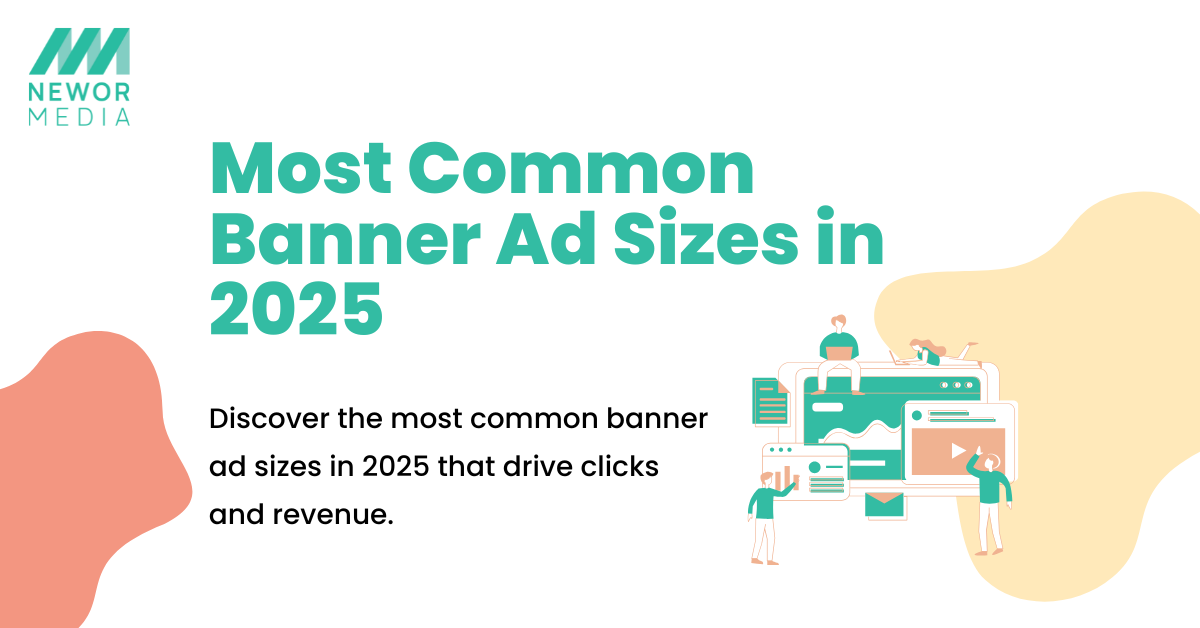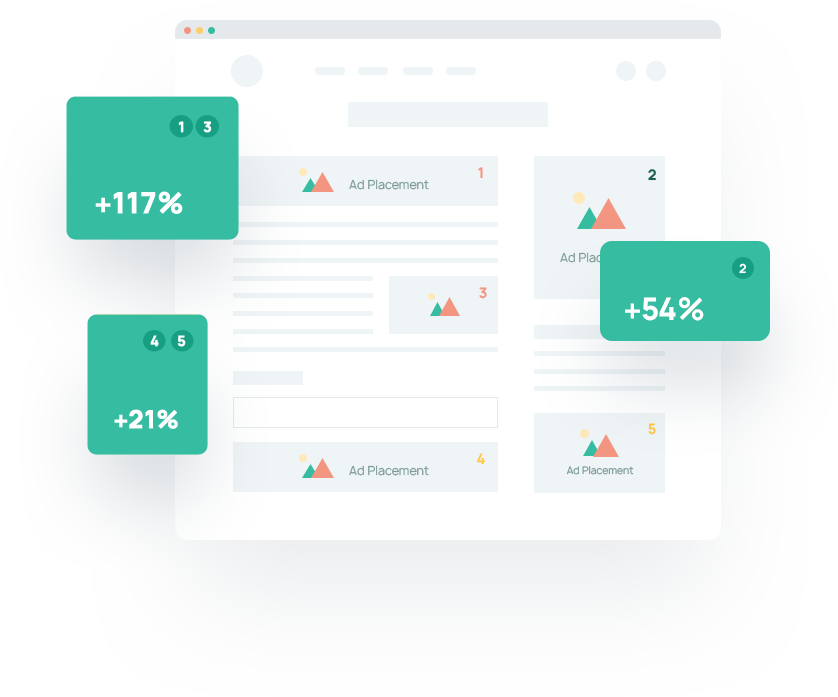Banner ads have been around since digital advertising started and they’re still a commonly used ad format today. Whether you’re running programmatic display campaigns, retargeting visitors, or just trying to monetize a website, banner advertising plays an important part in grabbing attention and driving clicks.
But when it comes to banner advertisements, size definitely matters.
In 2025, advertisers and publishers alike are working with an increasingly mobile-first, screen-diverse audience. So what are the most common banner ad sizes you should be using? What are the standard banner sizes publishers need to support for the best performance and revenue potential?
Let’s break it down.
Why Banner Advertising Sizes Matter in 2025
Before we looking at numbers, let’s see why banner advertising sizes are still a big deal in 2025.
It is simple. Format always performance.
Ad sizes are no created equally. Some formats deliver higher CTRs. Others give you better CPMs. And some just fit better with user behavior across devices.
Ad networks (especially Google AdSense and demand partners via header bidding) prioritize standard banner sizes because they’re easier to fill, scale better across publishers, and offer consistent performance across desktop and mobile environments.
As a publisher, the banner sizes you support on your site directly affect how many ads you can serve, how well those ads perform, and how much you earn.
So let’s talk numbers.
Top Performing & Common Banner Sizes in 2025
Here are the most commonly used banner ad sizes this year, based on industry data and performance across Newor Media’s network:
-
300×250 – Medium Rectangle
- Also known as: MREC, Inline Rectangle
- Best used in: Sidebar, within content, mobile interstitials
This is still the king of digital banner sizes. The 300×250 is popular because it’s compact but visually effective, making it a favorite for both desktop and mobile environments. It loads quickly and doesn’t interrupt the user experience too much, which helps boost viewability and click-through rates.
Pro tip: Placing 300×250 ads in-content (i.e., between paragraphs) tends to outperform placements in the sidebar.
-
728×90 – Leaderboard
- Best used in: Top of pages, bottom of articles, desktop headers
The 728×90 banner is a desktop staple. It’s wide and easy to spot, making it perfect for branding campaigns and site-wide headers. While it’s seen less often on mobile, it’s still a go-to for desktop monetization strategies.
Pro tip: Combine this with a sticky footer placement to maximize its impact without being intrusive.
-
320×50 – Mobile Leaderboard
- Best used in: Mobile web, sticky footers on smartphones
With mobile traffic dominating web usage, the 320×50 mobile leaderboard has become a must-have. It’s compact, mobile-friendly, and works especially well when placed at the top or bottom of the viewport.
Pro tip: Consider using a 320×100 if you want more visibility—it offers better CTRs without taking up significantly more screen real estate.
-
300×600 – Half Page
- Best used in: Sidebars, longer scroll content
This tall format offers more space for high-impact creative and storytelling, making it ideal for brand campaigns. It’s also one of the highest paying ad units in terms of CPM. While it’s more common on desktop, it can also work in mobile layouts that support vertical scroll.
Pro tip: Use lazy loading to improve site speed when using large ad units like this one.
-
160×600 – Wide Skyscraper
- Best used in: Right or left sidebars on desktop
Another vertical unit, the 160×600 is narrower than the half page ad but still offers great visibility—especially for users who linger on long-form content. It’s not quite as lucrative as the 300×600, but it’s still a solid performer in many verticals.
-
970×250 – Billboard
- Best used in: Top of homepage or article pages (desktop)
This is one of the largest standard banner sizes and it’s designed to make a bold impact. It’s ideal for advertisers looking to run high-visibility campaigns and works best on premium publisher sites. Because of its size, it can be a bit heavy on load times, so consider your site speed before integrating it.
Up-and-Coming Banner Sizes to Watch
While the above are the classics, a few other digital banner sizes are starting to gain more attention in 2025:
- 320×100 – Large Mobile Banner: Twice the height of a standard mobile leaderboard, this size performs better for mobile engagement.
- 970×90 – Large Leaderboard: Offers more room for creative without going full billboard.
- 468×60 – Banner: It’s more of a legacy size, but still supported by some networks.
The key takeaway? The best size depends on where and how you’re serving it. But supporting a mix of common banner sizes helps you maximize fill rates and open your inventory to more demand.
Responsive Ads vs. Fixed Sizes: What Works Best?
If you’re wondering whether you still need fixed-size ad slots in a responsive world, the answer is: yes and no.
Responsive ads have improved a lot in recent years. They can auto-adjust to available space and are especially useful for mobile-first layouts.
But standard banner sizes still dominate in terms of demand and fill. Most programmatic campaigns are built around fixed dimensions, so if your site doesn’t support those specific sizes, you’re likely leaving money on the table.
The best approach? Use fixed-size containers with responsive fallback logic. That way, your site is flexible enough for different devices but still eligible for the high-performing units most advertisers use.
Which Banner Sizes Earn the Most?
While ad revenue depends on many factors—like content niche, traffic source, and viewability—some banner advertisements consistently earn more across the board:
- 300×600 (Half Page) – High engagement, premium CPMs
- 970×250 (Billboard) – Excellent for branded campaigns
- 300×250 (MREC) – Balanced demand and performance
That said, the real revenue driver isn’t just ad size. It’s also about layout, user experience, and partner optimization.
At Newor Media, we help publishers unlock better ad performance by combining optimized layouts with intelligent ad serving. Supporting the right banner ad sizes is just the start—we help you figure out how to use them effectively.
Final Thoughts: Optimize for the Right Sizes
In 2025, banner advertising is alive and well. The formats have evolved, the environments are more diverse, and users expect a smoother, less intrusive ad experience. But supporting the most common banner sizes is still foundational to ad revenue success.
Here’s a quick recap of what to prioritize:
- 300×250 – For in-content and mobile
- 728×90 – For desktop headers and footers
- 320×50 – For mobile-friendly monetization
- 300×600 – For premium visibility and CPM
- 970×250 – For branded impact on high-traffic pages
By focusing on these standard banner sizes, you’ll attract more advertiser demand, improve user engagement, and build a more profitable ad strategy.
Want better results from your banner ads?
Newor Media’s platform is built to help publishers earn more—without sacrificing user experience. From layout optimization to revenue maximization, we handle the heavy lifting so you can focus on your content.

